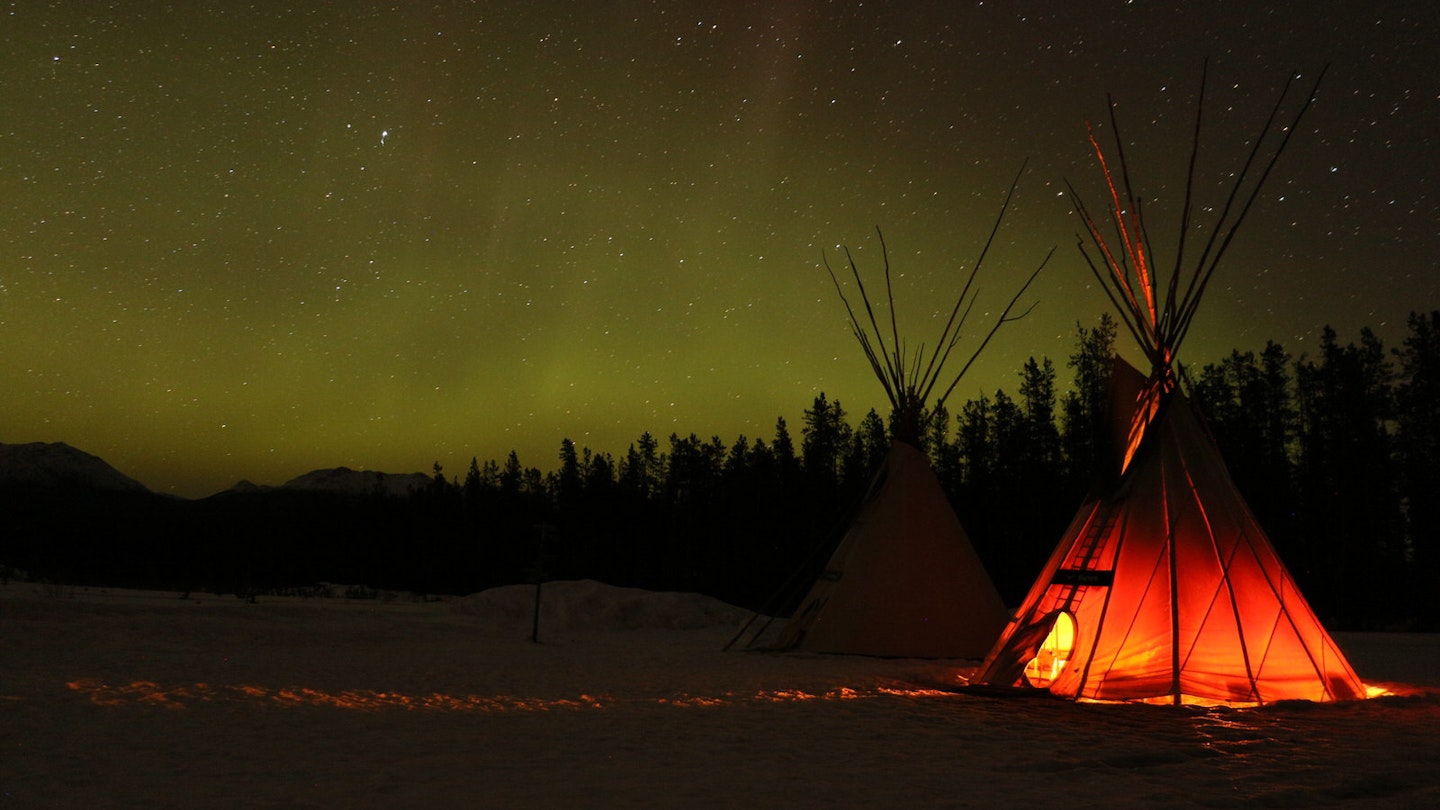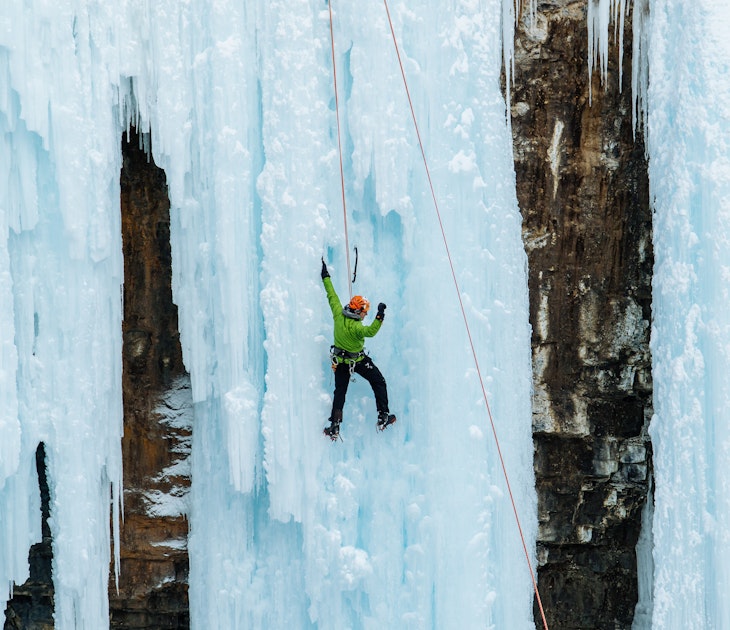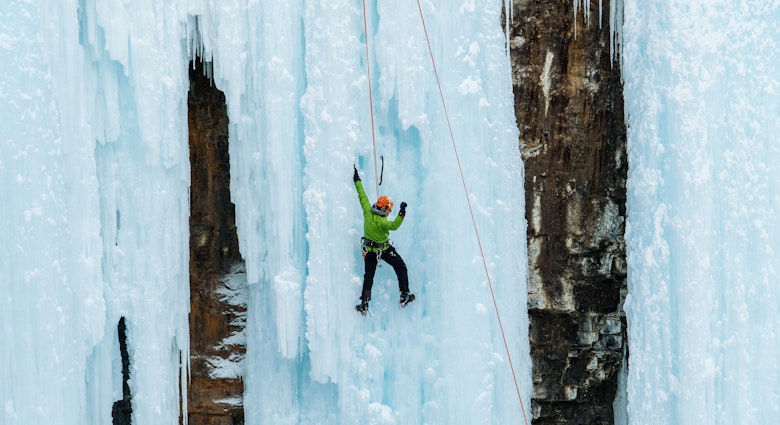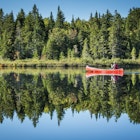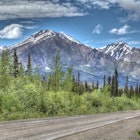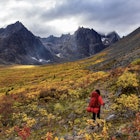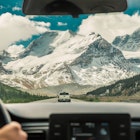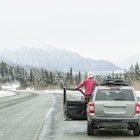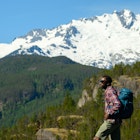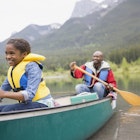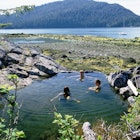The Yukon Territory of Canada, south only from the Beaufort Sea, Arctic Ocean and North Pole, exists in the mind’s eye as a wilderness of chalky mountains, wolf-filled forests and deadly snow-covered passes where gold panners and fur-clad trappers lost their way or went mad, unable to cope with the territory’s extreme weather and geography.
Here, characters like the dispatchers, stampeders and outdoorsmen of Jack London’s classic Call of the Wild drift up from memory, hinting at backwoods exploration and heartening adventures.

Such pleasures are even more acute when considering the amount of Yukon there is to discover. The territory, bigger than Sweden, Germany or Japan, is a 480,000-square-km triangle of the farthest reaches of the North American mainland, centering on the city of Whitehorse and taking in some of the world’s most convoluted mountains and stark glacial valleys.
It’s an area that includes the world’s largest non-polar icefield and the storied Yukon River, named after a First Nations Gwich’in phrase meaning ‘pale-colored white water’.
This most exhilarating landscape – extreme, unfathomable – matches the wanderlust of the people who choose to come here. And yet it is also a domain where affordable micro-adventures are easier to come by than you may think. Here are its most memorable, from seeing mountains where man rarely treads to crossing the world’s smallest desert.
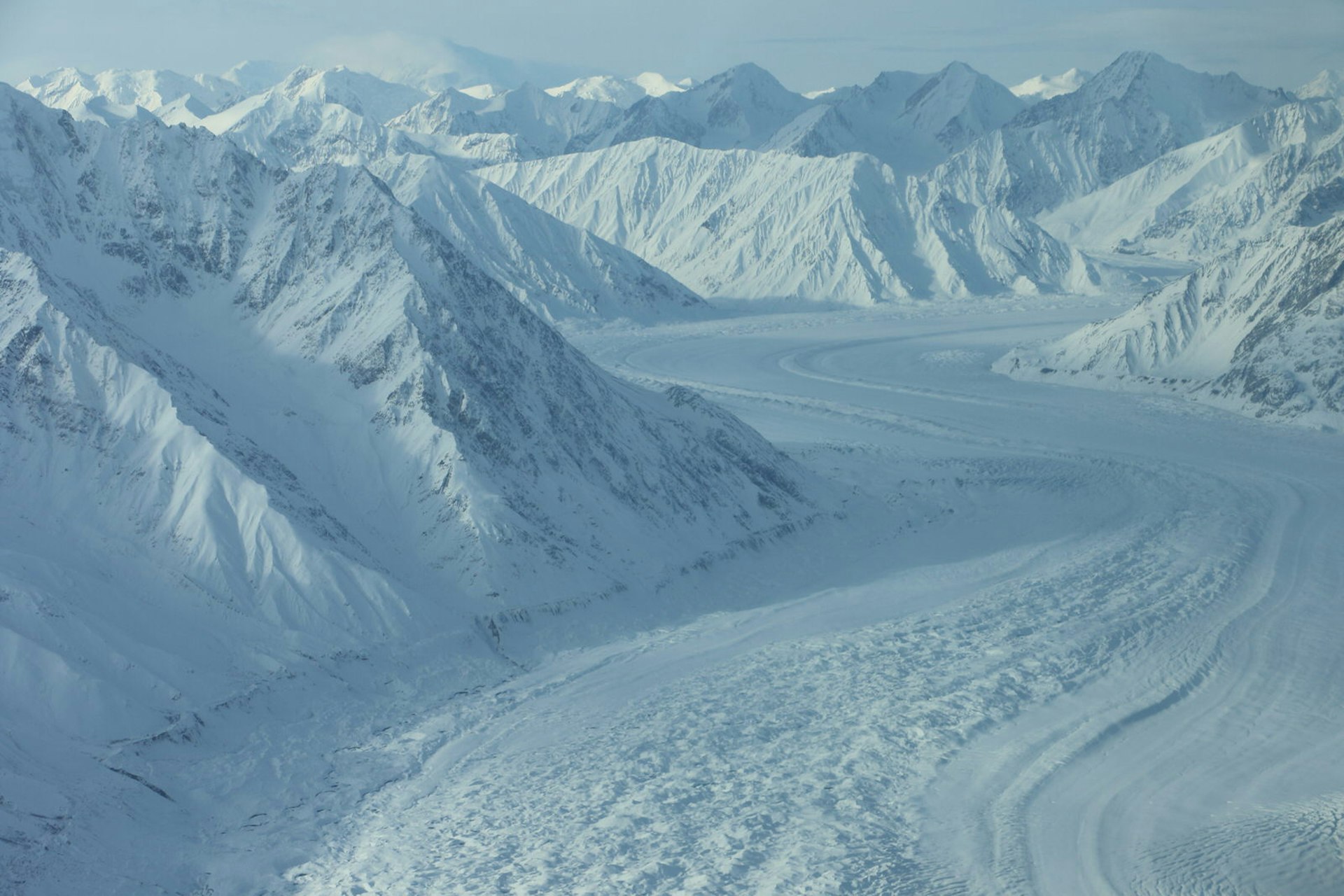
Explore the world’s largest non-polar ice field
Deep in midwinter, the road into Kluane National Park goes through the Haines Junction airfield. But to a local pilot like Daniel Clunies-Ross, this is only where his world begins. ‘Many of these mountains have never been set foot on by man,’ he says with hushed excitement, the crackle from his radio mic echoing as the Cessna six-seater leaves the runway behind. ‘That’s how extreme this place is.’
Up above the tree line, Canada’s largest area of natural beauty opens like a pop-up book, the summit of 19,551ft (5.96km) Mount Logan – the second highest peak in North America – forming the apex of the world’s largest non-polar ice field. From above, glaciers zigzag across the landscape, each icy superhighway scored by gigantic curved ribs, as if a relic of a forgotten Ice Age leviathan. And everywhere are impenetrable mountains.
The pilot’s daily 300km loop first takes him magnetic west, straight as a drawn line, before he pivots around a succession of peaks that straddle the continental divide between Canada and Alaska. And then deep inside the park, with the kind of drama that that is familiar in Kluane, the plane plunges downward from 10,000ft (3.05km) to skim over marbled ice tongues, crinkle-cut seracs and sink holes that appear in the midst of 6km-wide glaciers.
‘Let’s take a closer look,’ says Clunies-Ross, tipping the controls forward so the plane swoops low. ‘That’s Kaskawulsh Glacier, then in the distance you have Fisher, Lowell, Hubbard and Seward.’ Next to them, resplendent as if waiting for a portrait, are Mounts Queen Mary, King George and Vancouver, backed by a platoon of others marching to the horizon. There are so many, hundreds have yet to be named. ‘That’s Kluane’s problem in a nutshell,’ says Clunies-Ross, with a sigh, turning the prop plane back east. ‘Once you get out here, it’s hard to say goodbye.’

Ice-fish on a remote frozen lake
Everyone in the Yukon has a story, but few tell them as well as Patrick Beille. His tales are legion, from spending a winter alone in an off-grid trapper’s cabin to being burgled by a brown bear. But his shared knowledge of ice-fishing for Arctic char takes a little more to stomach.
‘If you catch one you’ll need to gut it straight away, then use the heart as bait for the next fish,’ he says, while boring through meter-thick lake ice with a corkscrew-like auger. ‘Drill too wide or too shallow and it won’t work – the bluff is to let enough light in to trick the fish.’
Below a raven-filled sky, seated on the iced-over Caribou Lake south of Whitehorse, he jigs with a spinner and lure, constantly maintaining movement on the line. The hope is to catch a prime specimen, even if it is minus-15 degrees Celsius. Yet despite the extreme cold, he says, the fish can live to 60 years and are known to swim up to 120km, populating inaccessible lakes, many of which have never been fished. ‘You have to work for this,’ he says, the light turning golden as the temperature drops further. ‘In the Yukon, nothing is going to bend to your will.’
Suddenly, while peering through the hole of sloshing ice, he makes out a shadow. The sight of something – a brief ripple, a slight tremor on the line – excites him to the point of dropping the rod, but the char escapes, tugging the lure for a split second, before vanishing into the gloom. Like all things in the Yukon, the fine line between life, death and supper takes some getting used to.
Left empty-handed, Patrick surveys the darkening skies, preparing to return to his cabin. Later, as night falls, he is reminded again of nature’s unpredictability. At first the sky turns black, lit only by a slew of stars. Then, from out of nowhere, an arc of green flits across the sky, ever-shifting and dancing towards the horizon, diffusing iridescent light onto the snow. And he is left, under a moonless sky, in awe of the aurora, the stars, and the Yukon’s potential to give him yet another story.
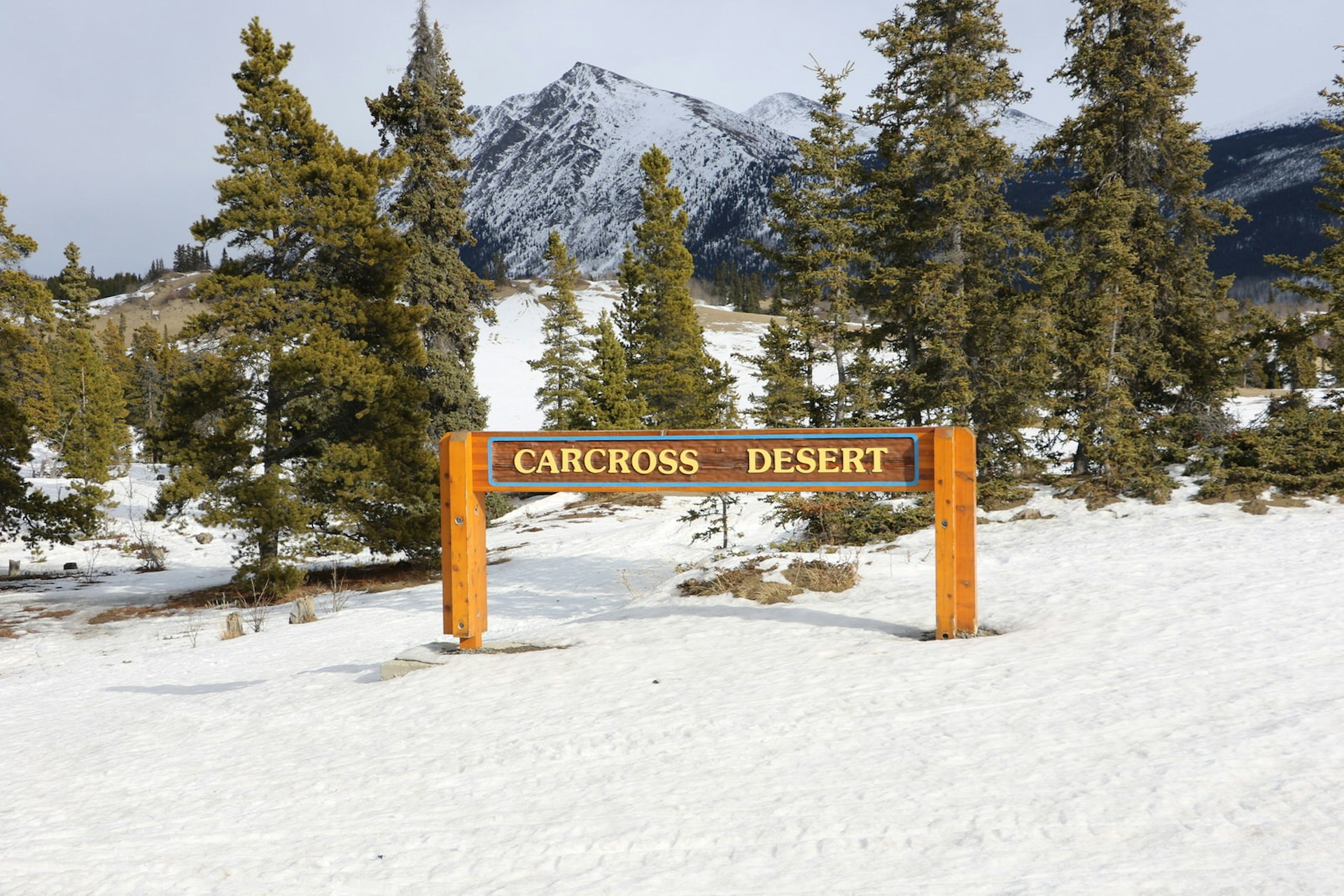
Cross the world’s smallest desert
It’s a quantum leap from snow-engulfed drifts to sand dunes, sedge grass and violet-tipped lupine. Yet it’s those two extremes found outside the town of Carcross – one polished, the other gritty – that combine to make the area one of the most intoxicating in the Yukon.
The Carcross Desert offers a glimpse of this environment, formed from millennium-old sand blown onshore from nearby Lake Bennett. The Ice Age has long gone, but the desert – exposed in summer, snow-covered in winter – remains, leaving behind an undulating footprint that flows from the lakeshore to the base of Caribou Mountain.
With such an enchanting backdrop, it’s little wonder visitors have begun to turn the 600m-wide dust bowl into an adventurer’s Xanadu. After heavy snowfall, snowshoers and skiers recast the desert as an outdoor gym, the rippling dunes working hard as a rollercoaster of varying slopes for beginners and experts. In summer, meanwhile, the glittering sand is repurposed by hikers, mountain bikers and sandboarders.
It delivers on a promise of sublime drama. And whether swathed in dazzling white or sandy gold, you’ll never feel truly alone in this far-flung part of the world. The surrounding meadows provide camouflage for mountain goats, woodland caribou and Viking-horned dall sheep, all of which leave their mark in the snow.
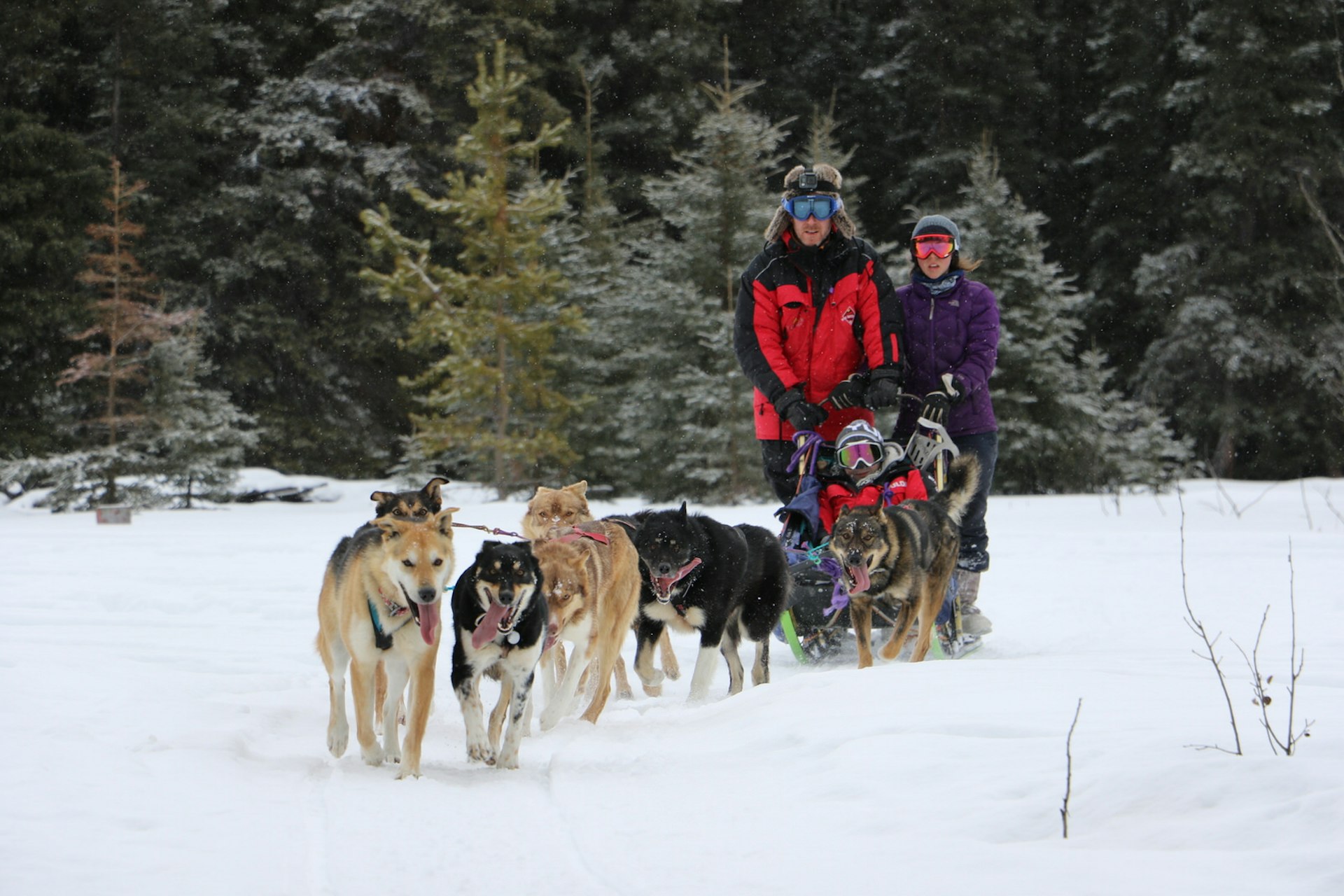
Dogsled into uncharted Yukon boreal forest
The Southern Lakes of Tagish, Marsh and Squanga, the beating heart of Western Canada’s midriff, are places where almost everyone has a dog team. Tagish and Tlingit First Nations peoples, the Yukon’s indigenous settlers, started the craze back in pre-colonial times when winter-tuned huskies were used as draft animals. Then, gold rush prospectors ushered in the era of the sled dog in the 1800s while freighting supplies huge distances with entire kennels.
Today, the dogs are outfitted with cozy booties, harnesses and comfy sleds, but when sensing adventure is afoot, they still become feverish with excitement, howling and yapping as if starved of freedom. Therein lies the sport’s controversy. Critics such as People for the Ethical Treatment of Animals (PETA) condemn dogsledding for needlessly pushing tethered dogs to their limit, particularly during relentless, long-distance races. Others go further, equating dog-sledding with animal abuse. Yet its advocates – of whom there are many – say the dogs are bred to run and husky safety is paramount.
‘To be a true dog musher, requires strength and stamina, but above everything a genuine love for the dogs,’ says Southern Lakes Resort’s Vincent Galliard, as his 12-strong team lurches across the snow. ‘You need to get along, because sometimes you don’t see another person for days. They are treated like family.’
His charges – Tacoma, Finn, Darth, Racine, Stevie, Adele, Floyd and Zeppelin – may be 21st-century pups, named after Star Wars characters and rock stars, but you couldn’t imagine them in any other setting than in a boreal forest of willow and stripped-back fir, or charging headlong into an expanse of bleak nothingness somewhere on a lake. For in midwinter, waterways freeze over and become the most efficient highways.
On such makeshift roads, the silent reverie of the Yukon abounds with possibility, and for the likes of Galliard and his huskies, the dogsled journey becomes more a state of mind. Put the two together and there’s something astonishing about it – time-honored, yet thrillingly alien to a visitor all the same.
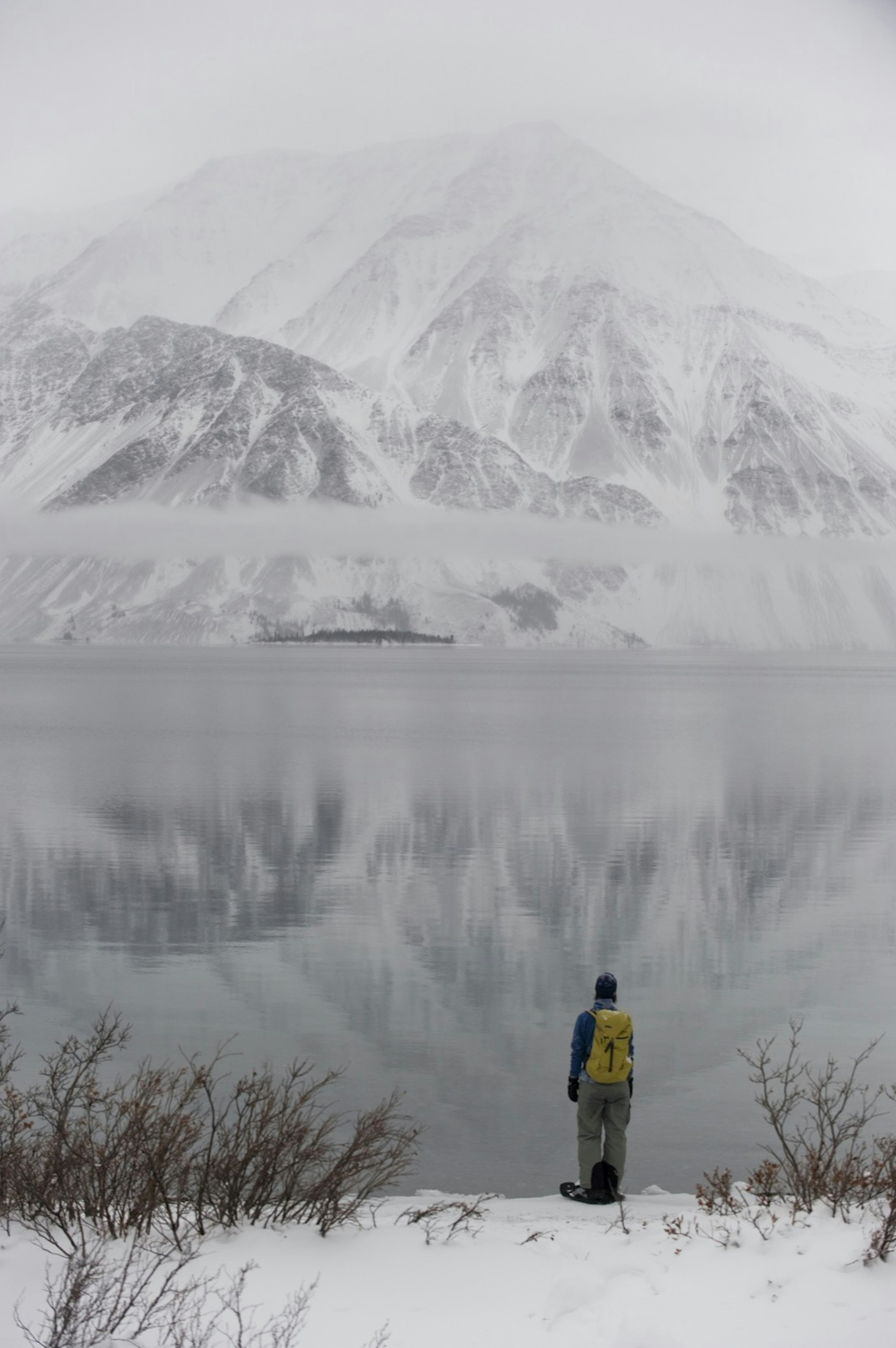
Make it Happen
Rocking Star Adventures can book Kluane National Park glacier tours (from $306), while ice fishing on Caribou Lake is available from The Inn on the Lake (from $254). Northern Lights viewing is available across the Yukon, but Whitehorse-based operator Arctic Range Adventure is recommended for its four-hour tours (from $165). Dogsledding tours are offered at Southern Lakes Resort (from $368).
Originally published May 2018. Updated October 2019.
Mike MacEacheran travelled to Canada with thanks to Travel Yukon and Destination Canada. Lonely Planet contributors do not accept freebies in exchange for positive coverage.
